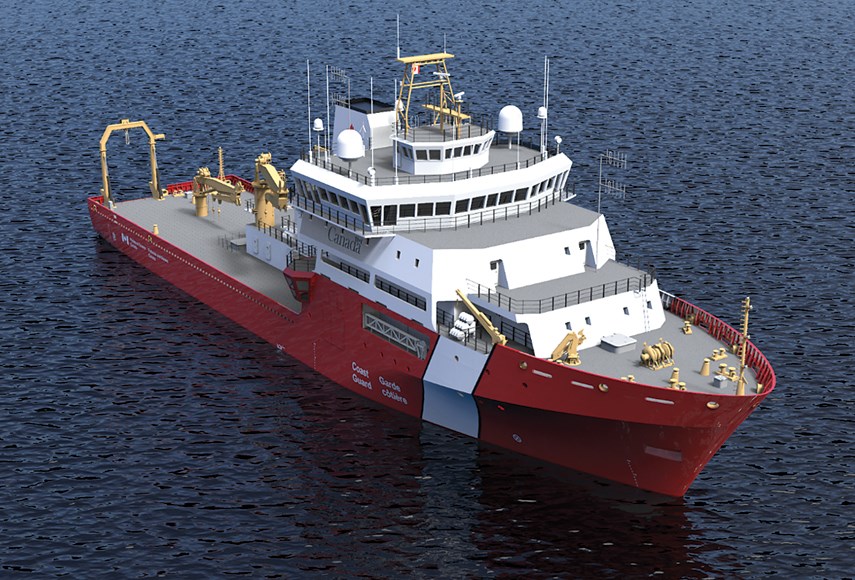Workers at Seaspan’s North Vancouver shipyard will be cutting steel on a new offshore ocean science vessel this month, following the recent signing of a contract with the federal government to build the ship for $454 million.
Seaspan expects to cut steel to begin building the ship by the end of March, said Amy MacLeod, vice-president of corporate affairs and external communications for Seaspan.
Delivery of the ship is expected in 2024.
The offshore ocean science vessel is the third type of ship being built at the local shipyard under the federal government’s national shipbuilding strategy.
The new ship will replace the current Canadian Coast Guard vessel Hudson, its oldest and largest science vessel. The ship will be capable of conducting multiple tasks, including oceanographic, geological and hydrographic survey missions.
Science ship will include a floating lab
“It's not just a vessel. It has a full high-end research laboratory on it as well, so it’s quite a sophisticated ship,” said MacLeod.
At about 88 metres in length, the ship will be about 30 per cent larger than the earlier three fisheries ships built at Seaspan.
Work on the ocean science vessel will start while construction on the first massive navy joint support ship is still ongoing at Seaspan.
Work on that ship is “well advanced,” said MacLeod. “It’s an imposing ship. You can’t miss it.”
The first joint support ship is scheduled for completion in 2023. The second joint support ship is to be finished in 2025, one year after the ocean science vessel.
Federal ships keep 1,300 people working at Seaspan
The ships are expected to keep approximately 1,300 people working at Seaspan. “The goal is continuous employment,” said MacLeod.
With a total budget of $966.5 million, the ocean science vessel is now expected to cost almost over six times more to build than the $144 million originally projected over a decade ago.
“Today, we've got a much, much more robust and reliable understanding of the time and effort and expenditure to build these vessels and also to design them,” said MacLeod.
“Those early estimates, they might not have been as informed as they could have been.”
The federal government has already paid Seaspan to work on the design and engineering of the ocean science vessel under another contract.
MacLeod added that not all of the project budget is for the design and building of the ship.
Auditor's report points to signiifcant delays
At the end of February, Canada’s auditor general released a report on Canada’s national shipbuilding strategy that concluded many ships being built had been significantly delayed.
“The government acknowledged that it, along with the shipyards, had been overly optimistic, considering that whole new classes of ships were being built in new shipyards by new workforces,” wrote the auditor general.
Delays at Seaspan meant “the Canadian Coast Guard had to extend the life of the Canadian Coast Guard Ship Hudson, which the offshore oceanographic science vessel was to replace. This work included a $10-million life extension contract awarded in 2019,” wrote the auditor.
In addition, delays in the schedule for the fisheries vessels mean the Coast Guard had to “charter commercial vessels to help carry out marine research and monitoring.”
Icebreaker contract yet to be awarded
The contract for a large polar icebreaker has still not been awarded under the national shipbuilding program. Originally included in the Seaspan umbrella agreement, the federal government more recently opened up the project to bidding from a third shipyard, Davie Shipyards from Quebec.
Seaspan is actively working to win back the contract, said MacLeod. “Seaspan Shipyards was purpose built to deliver (the polar vessel),” said MacLeod. “We had it built into our production schedule. We feel we are the right shipyard to build that vessel.”




